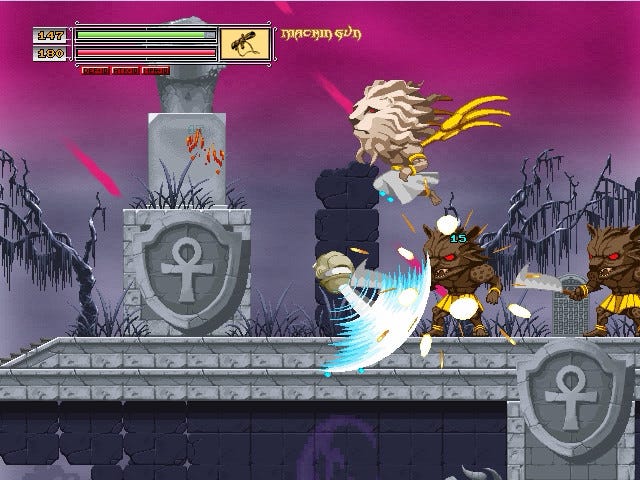Trending
Opinion: How will Project 2025 impact game developers?
The Heritage Foundation's manifesto for the possible next administration could do great harm to many, including large portions of the game development community.
The indie dev known as Krobon describes the unique challenges of creating a platformer (Pharaoh Rebirth+) designed to be released episodically on NicoNicoVideo's new game platform.

NicoNico Video, a Japanese video site much like YouTube, has been branching into the indie game scene for a few years now. It started with their annual Indie Game Fest, for which game creators can submit games to be used in Let's Plays during the judging period.
Last June, NicoNico parent company Dwango branched out even further by starting a platform for indie games called NicoNico Game Magazine (JP, EN). Participating developers release their games as free episodic content, with new episodes coming out every two months.
So far, two games which completed development as NicoNico Game Magazine offerings have been bundled up into full games and released on Steam in English, Hero & Daughter+ in February and Pharaoh Rebirth+ in March. The former is a clever, satirical RPG that pokes fun at its own genre. The latter is a Metroidvania platformer.

Pharaoh Rebirth+ was developed by a Japanese indie developer known as Krobon, who's been making games since 1998. Although a 3D graphics artist by trade, he does everything but the music for his games on his own. For that, he collaborates with a musician who goes by Pepo (JP).
Krobon received a request to make a game from Dwango in February 2015 and after about a month of planning began development of Pharaoh Rebirth. Since it was one of the very first offerings, he had just over two months to complete the first episode. "I developed it on a hellish schedule," he says.

Although Dwango contacted Krobon in mid-February, he'd already had an idea for a player character floating through his head for a while. "On February 1, 2015, I made an appearance at a Japanese game event called Tokaigi (JP), where I sat for an interview. During that, I talked about my ideas for an action game which would have an anthropomorphic rabbit that attacks with its ears as the main character," says Krobon.
"I originally got the idea from a sketch of an anthropomorphic rabbit that one of my subordinates at work made," he says. "It was just a sketch, but the rabbit's ears were shaped like minerals. From that, I thought of a main character that could transform its ears and use them to attack."
He considered both treasure hunting and spy work as themes, ultimately deciding that since he wanted to include item collection, it would be a treasure hunting game with spy overtones to the story.

Krobon admits that making an episodic platformer presented some design challenges, but he went for it anyway because nothing like NicoNico Game Magazine had been done before. "In general, players of platformers grow and advance in skill until they can clear the game," he says. "You would generally increase the difficulty gradually to match the player's growing skill."
"However, when you make it episodic, you have players clearing the first stage and then playing the second stage two months later. In that case, you get a problem of the passage of time causing the player to forget the feel of the game, so their skill decreases. That was the biggest challenge."
Krobon got around this problem by increasing difficulty at a slower rate than he would otherwise, and adding items to later stages to help the player along. The example he gave was of adding an item that gave the player a double jump capability to stage five for players whose skills had eroded since playing stage four.

When asked what he thought was the best thing about being part of NicoNico Game Magazine, Krobon said that being able to get his name out there was at the top of the list. "I have a long history of creating games, but for the eight years from 2005 to 2013 I didn't make hardly any," he says. "My notoriety had gone down, but being in this Game Magazine has given me the opportunity to become known to many more people."
He also found the opportunity to have his game played by a lot of people while in development useful. Between Let's Plays and emails from fans with requests and suggestions for features, he feels like he completed Pharaoh Rebirth+ with the help of many playtesters.
"If given the chance, I'd like to participate in NicoNico Game Magazine again," says Krobon, "but I've learned that doing a platformer for it is difficult. If I get to do it again, I think I'll need to make a game specifically designed for the NicoNico Game Magazine system."

There is currently no way for game creators to apply for a spot in NicoNico Game Magazine. "The only way [to get featured] is to be an excellent creator found and invited by someone at Dwango," says Krobon. "If someone really wants to get in, I think their best bet is to enter NicoNico's annual Indie Game Fest and get noticed by someone at Dwango by doing well in it. In my case, I entered their first competition ever in 2013 with a game called Action Mogura (Action Mole) and came out in the top 5."
You May Also Like